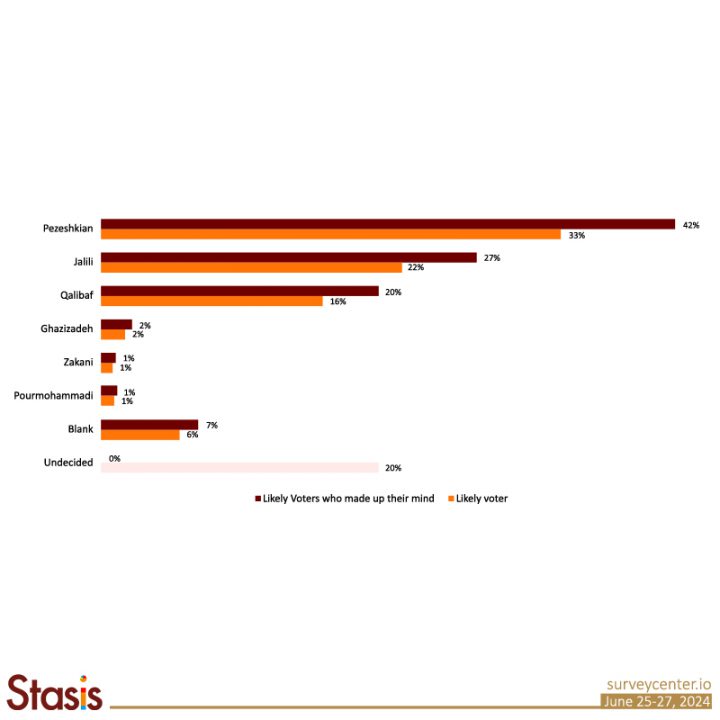
Reformist Candidate is frontrunner in Iran’s 2024 Presidential Election
According to final Stasis’ poll, a reformist candidate, is frontrunner in Iran’s 2024 presidential election. The poll shows that 33 percent of likely voters support Pezeshkian, followed by hardliner Jalili at 25 percent, and moderate Principlist, Qalibaf at 16 percent. This poll, conducted between June 25 and June 27, 2022, among 975 respondents aged 18 and older living in Iran.
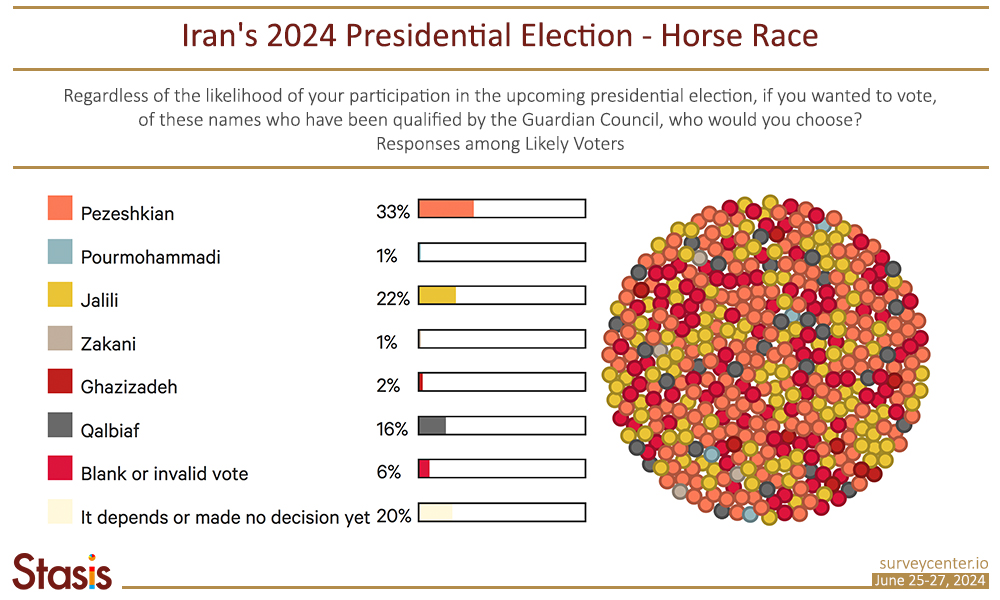
Among the likely voters who have already made up their mind, Mr. Pezeshkian is leading a race by 42%.
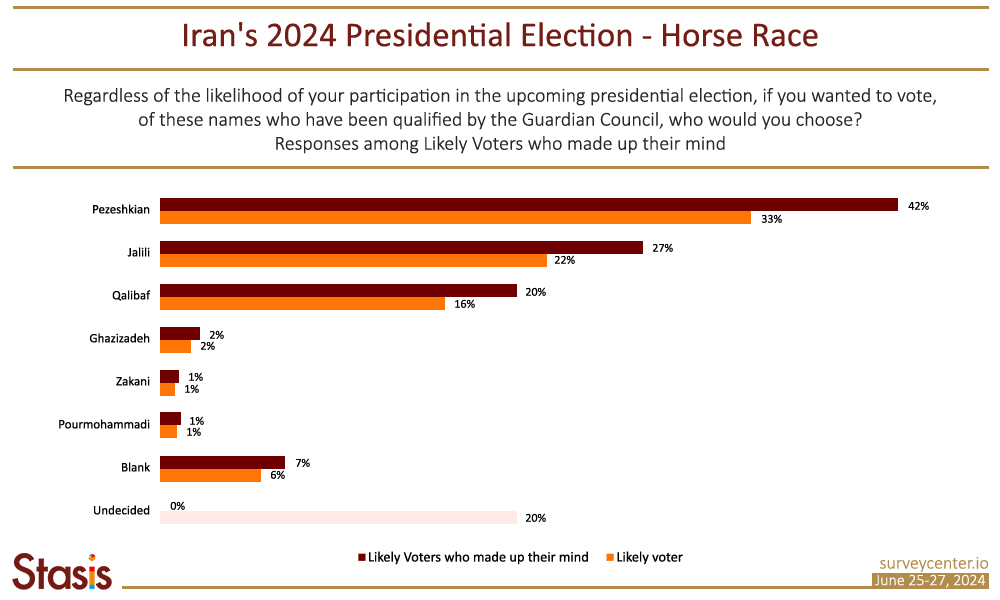
In our previous survey conducted last week, Saeed Jalili had two-percentage points lead over his main contender, Masoud Pezeshkian with 27% to 25%.
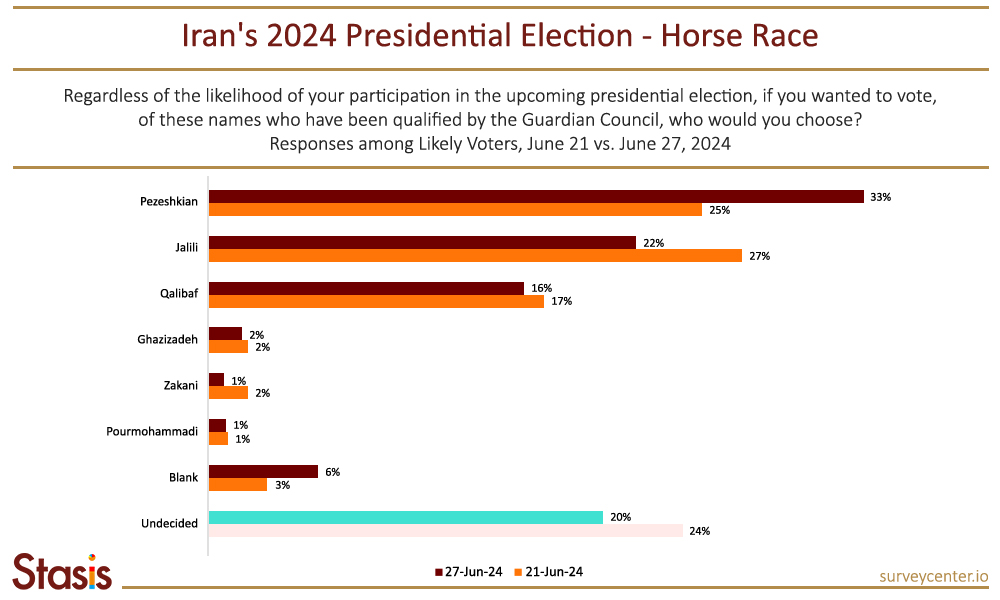
Election Turnout
According to ourlikely voter model, we found that approximately 51% of Iranian citizens will participate in the upcoming presidential election (Stasis’ likely voter model is described in the remarks section of this report).
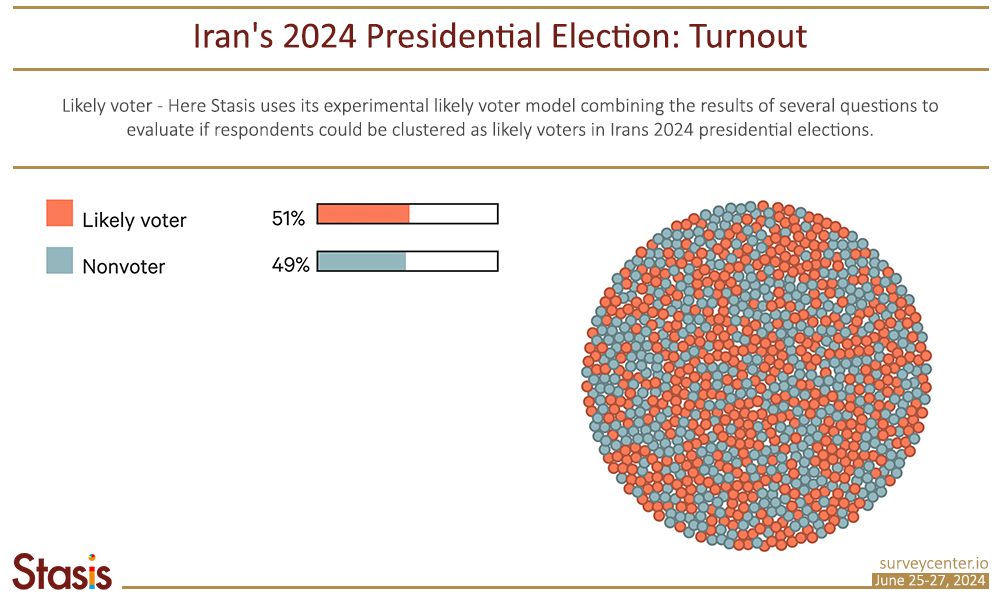
Remarks
The results of this poll have been interactively visualized in this link.
This is an interactive platform detailing the results of every question, distinguished by gender, age group, location, and education in a bar chart.
For each question, there is a bubble chart (consisting of many small circles), detailing the respondents’ information. Each circle represents a single respondent and by clicking on it, you can find the complete answer set for that particular respondent. The color coding is consistent between the bubble chart and bar chart for easy comparison.
Stasis uses our proprietary likely voter model, analyzing responses to different questions to identify probable voters. Criteria for likely voters include a) knowing (exactly or approximately) the election date, b) saying that they are very likely to participate in the election, c) not saying “I don’t know” or refusing to answer the question about the likelihood of their participation in the election, and d) mentioning that their participation might depend on some factors.
Methodology
- Telephone interviews were conducted between June 25 and June 27, 2021, with a random sample of 975 Iranians aged 18 and older living in Iran. Native Farsi speakers conducted the interviews during daylight hours.
- The proportional two-stage sample includes respondents from every province. Provinces have been sampled based on their population.
- Results are weighted by gender, age, location (urban vs. rural areas), based on the Iranian national census of 2016, the 2018 statistical yearbook, and demographic predictions from Iran’s Statistical Center for the year 2024.
- Based on the sample, there is a 95% confidence that the margin of sampling error is ± 3.1 percentage points (likely voters excluded).
- Rates of respondent candor and reliability were appraised by experienced interviewers
- This poll was carried out by Stasis in association with the Middle East Institute.
- The response rate for this survey was 44.2%.